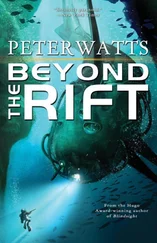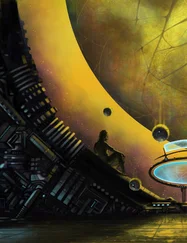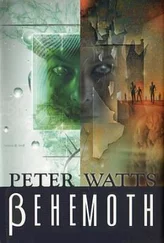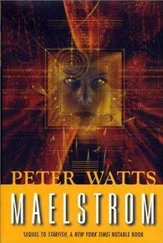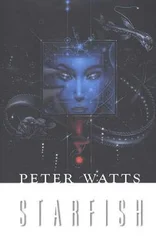An obvious significant downside is that most religious beliefs—gods, souls, Space Disneyland—are held at best in the complete absence of empirical evidence (and are more frequently held in the face of opposing evidence). While it remains impossible to disprove the negative, for most practical purposes it’s reasonable to describe such beliefs as simply wrong .
It was only during the writing this book that it occurred to me to wonder if one couldn’t say the same about science.
Lutterodt’s comparison of religious faith with the physiology of vision came to me while I was reading Inzlicht et al, [55] Michael Inzlicht, Alexa M. Tullett, and Marie Good, “The Need to Believe: a Neuroscience Account of Religion as a Motivated Process,” Religion, Brain & Behavior 1, no. 3 (2011): 192–212, doi:10.1080/2153599X.2011.647849.
a paper that describes religion as an internal model of reality that confers benefits even though it’s wrong. While that idea is nothing new, the way it was phrased was so reminiscent of the way our brains work—the old survival-engines-not-truth-detectors shtick—that I had to wonder if the whole right/wrong distinction might be off the table the moment any worldview passes through a Human nervous system. And the next paper [56] George Ellis, “Cosmology: Patchy Solutions,” Nature 452, no. 7184 (March 13, 2008): 158–161, doi:10.1038/452158a.
I read suggested that certain cosmic mysteries might not be a function of dark energy so much as inconstancies in the laws of physics—and if that were the case, there’d really be no way to tell…
Of course, there’s absolutely no denying the functional utility of the scientific method, especially when you compare it to the beads and rattles of those guys with the funny hats. Still, I have to admit: not entirely comfy with where that seemed to be heading for a bit.
…AND THE BICAMERAL CONDITION
The Bicameral Order did not begin as a hive. They began as a fortunate juxtaposition of adaptive malfunctions and sloppy fitness.
The name does not derive from Julian Jaynes. [57] Julian Jaynes, The Origin of Consciousness in the Breakdown of the Bicameral Mind (Boston: Houghton Mifflin Company, 1976).
Rather, both Jaynes and the Order recall a time when paired hemispheres were the only option: the right a pragmatic and unimaginative note-taker, the left a pattern-matcher. [58] Michael S. Gazzaniga, “The Split Brain Revisited,” Scientific American Special Edition 12, no. 1 (August 2, 2002): 27–31.
Think of “gene duplication,” that process by which genetic replication occasionally goes off the rails to serve up multiple copies of a gene where only one had existed before; these become “spares” available for evolutionary experimentation. Hemispheric lateralization was a little like that. A pragmatist core; a philosopher core.
The left hemisphere is on a quest for meaning, even when there isn’t any. False memories, pareidolia—the stress-induced perception of pattern in noise [59] Jennifer A. Whitson and Adam D. Galinsky, “Lacking Control Increases Illusory Pattern Perception,” Science 322, no. 5898 (October 3, 2008): 115–117, doi:10.1126/science.1159845.
—these are Lefty’s doing. When there are no data, or no meaning, Lefty may find it anyway. Lefty gets religion.
But sometimes patterns are subtle. Sometimes, noise is almost all there is: a kind of noise anyway, at least to classically evolved senses. Smeared probabilities, waves that obscure the location or momentum of whatever you’re squinting at. Virtual particles that elude detection anywhere past the edges of black holes. Maybe, when you move a few orders of magnitude away from the world our senses evolved to parse, a touch of pareidolia can take up the slack. Like the feather that evolved for thermoregulation and then got press-ganged, fully formed, into flight duty, perhaps the brain’s bogus-purpose-seeking wetware might be repurposed to finding patterns it once had to invent . Maybe the future is a fusion of the religious and the empirical.
Maybe all Lefty needs is a little help.
Malfunctions and breakdowns showed them the way. Certain kinds of brain damage result in massive increases in certain types of creativity.16 Strokes provoke bursts of artistic creativity, [60] Helen Thomson, “Mindscapes: Stroke Turned Ex-Con into Rhyming Painter” New Scientist , May 10, 2013, http://www.newscientist.com/article/dn23523-mindscapes-stroke-turned-excon-into-rhyming-painter.html .
frontotemporal dementia supercharges some parts of the brain even as it compromises others. [61] Sandra Blakeslee, “A Disease That Allowed Torrents of Creativity,” New York Times , April 8, 2008, sec. Health, http://www.nytimes.com/2008/04/08/health/08brai.html .
Some autistics possess visual hyperacuity comparable to that of birds of prey, even though they’re stuck with the same human eyes as the rest of us. [62] Emma Ashwin et al., “Eagle-Eyed Visual Acuity: An Experimental Investigation of Enhanced Perception in Autism,” Biological Psychiatry 65, no. 1 (January 1, 2009): 17–21, doi:10.1016/j.biopsych.2008.06.012.
Schizophrenics are immune to certain optical illusions. [63] Danai Dima et al., “Understanding Why Patients with Schizophrenia Do Not Perceive the Hollow-Mask Illusion Using Dynamic Causal Modelling,” NeuroImage 46, no. 4 (July 15, 2009): 1180–1186, doi:10.1016/j.neuroimage.2009.03.033.
At least some kinds of synesthesia confer cognitive advantages [64] Heather Mann et al., “Time-Space Synaesthesia–A Cognitive Advantage?,” Consciousness and Cognition 18, no. 3 (September 2009): 619–627, doi:10.1016/j.concog.2009.06.005.
(people who literally see time, arrayed about them in multicolored splendor, are twice as good as the rest of us at recalling events from their own personal timelines [65] Victoria Gill, “Can You See Time?,” BBC , September 11, 2009, sec. Science & Environment, http://news.bbc.co.uk/2/hi/science/nature/8248589.stm .
). And—as Daniel Brüks reflects—brain damage is actually a prerequisite for basic rationality in certain types of decision-making. [66] Michael Koenigs et al., “Damage to the Prefrontal Cortex Increases Utilitarian Moral Judgements,” Nature 446, no. 7138 (April 19, 2007): 908–911, doi:10.1038/nature05631.
The Bicamerals set out to damage their brains, in very specific ways. They manipulated the expression of NR2B, [67] Deheng Wang et al., “Genetic Enhancement of Memory and Long-Term Potentiation but Not CA1 Long-Term Depression in NR2B Transgenic Rats,” PLoS ONE 4, no. 10 (October 19, 2009): e7486, doi:10.1371/journal.pone.0007486.
tweaked TRNP-1 [68] Ronny Stahl et al., “Trnp1 Regulates Expansion and Folding of the Mammalian Cerebral Cortex by Control of Radial Glial Fate,” Cell 153, no. 3 (April 25, 2013): 535–549, doi:10.1016/j.cell.2013.03.027.
production, used careful cancers to promote growth (their genes tagged for easy identification, [69] Robert M. Hoffman, “The Multiple Uses of Fluorescent Proteins to Visualize Cancer in Vivo,” Nature Reviews Cancer 5, no. 10 (October 2005): 796–806, doi:10.1038/nrc1717.
should anything go wrong) and increase neurosculptural degrees of freedom. Then they ruthlessly weeded those connections, pruned back the tangle into optimum, isolated islands of functionality. [70] Anonymous, “Autism: Making the Connection,” The Economist , August 5, 2004, http://www.economist.com/node/3061282 .
They improved their pattern-matching skills to a degree almost inconceivable to mere baselines.
Читать дальше




